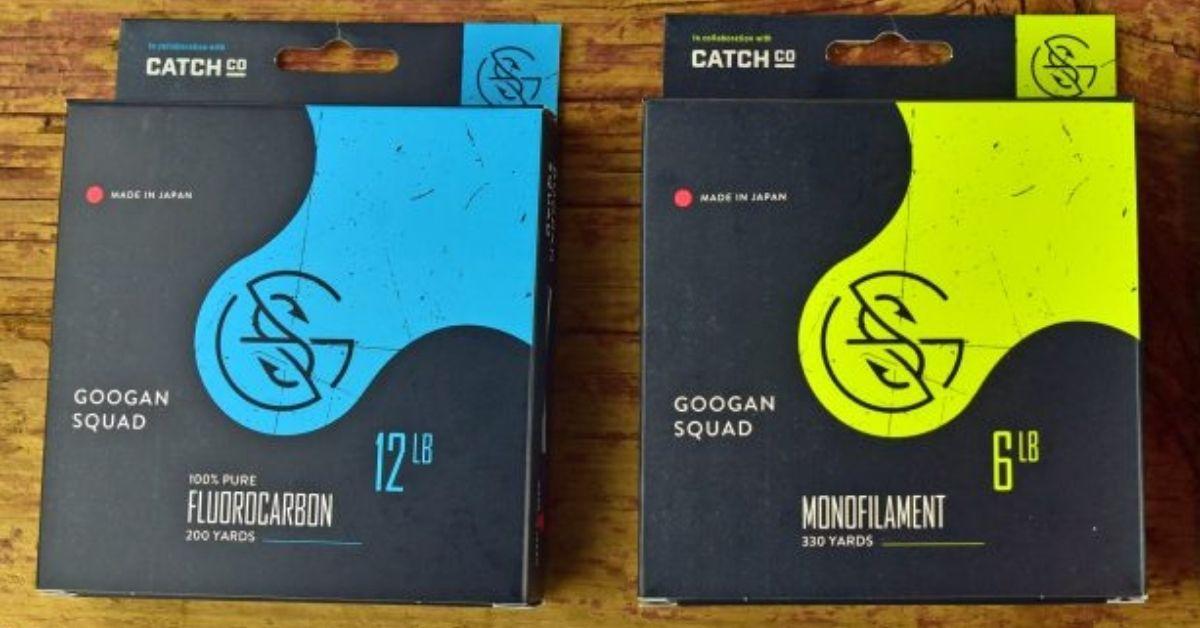Mono Vs Fluoro: What's The Best Fishing Line For Your Presentation?
What is the best fishing line? As fishermen, we have endless choices for our tackle. From rods and reels to lures, plastics, weights and beyond. However, possibly the most important tackle-based decision we need to make is our fishing line. If you think about it, fishing line is quite possibly the most important piece of our fishing setups. It is the connection between us, our lures and hooks, and the fish.
Most people know what braided fishing line is. It is, by far, the strongest type and to some, considered the best fishing line. It is constructed of strands that are interwoven together to create a highly durable, no-stretch, completely opaque line. Braided fishing line can be used for many things, but is most often preferred in situations that require extreme leverage and strength, such as pitching, flipping, and frogging and when line visibility is not a concern. Knowing when braid is the ideal line choice is crucial.
The uses for monofilament and fluorocarbon are not as clear as braided line, however. These two types of line are (now) equally as common on the market. They are oftentimes thought of as interchangeable and this notion is not completely incorrect. However, most anglers have preferences for when to use each to increase sensitivity, improve hookups, and give more action to lures. Both fluorocarbon and monofilament have their own unique characteristics which make them the best fishing line for certain situations.
Why Monofilament Is The Best Fishing Line
Monofilament was the original fishing line your grandfather talked about. For many years, monofilament dominated the fishing market because it was cheap, manageable, and worked well in most situations for the average fisherman. Monofilament is neutrally buoyant by nature and is effective in fishing topwater lures as well as lures which require a line to neither sink nor float, such as hard jerkbaits. Additionally, monofilament line has long been used for backing (A.K.A. "filler") for fishing reels. This enables anglers to use fluorocarbon and braided lines and benefit from their sensitivity and strength while not having to use an entire spool and waste money on the line on the bottom of the spool that doesn't get used. Being braided line is so thin, this bottom layer of monofilament also helps to ensure the braid will not dig into the spool and cause backlashes. Monofilment is the best line choice for beginner anglers due to it's low cost and being easy to manage.
Why Fluorocarbon Is The Best Fishing Line
If money and sensitivity are not an issue, many fishermen prefer fluorocarbon line in most cases. It was reportedly first used in the US in the 90s and it offers incredible abrasion resistance around cover likes rocks, wood, and docks. "Fluoro", as many anglers refer to it, is much stiffer than monofilament and earlier versions of the line caused problems when spooling line onto reels or tying knots. Today, however, fluorocarbon is nearly as pliable and manageable as monofilament but still transmits lure feel much better.
Fluorocarbon is the premium line of choice for jig and worm fishermen as the sensitivity is unrivaled and the line is nearly completely invisible in the water. Fluorocarbon allows a greater amount of natural light to pass through it whereas monofilament tends to refract light, alerting fish of its presence. This property also makes fluoro the optimal line for fishing all sorts of crankbaits.
An anglers' favorite or best fishing line is subjective. Choosing between fluorocarbon versus monofilament comes down to personal preference in terms of desired feel and budget. Each line has its pros and cons and the only sure way to know which line you prefer is to spend time on the water with each and experiment.
Updated December 16th, 2020 at 7:57 AM CT


